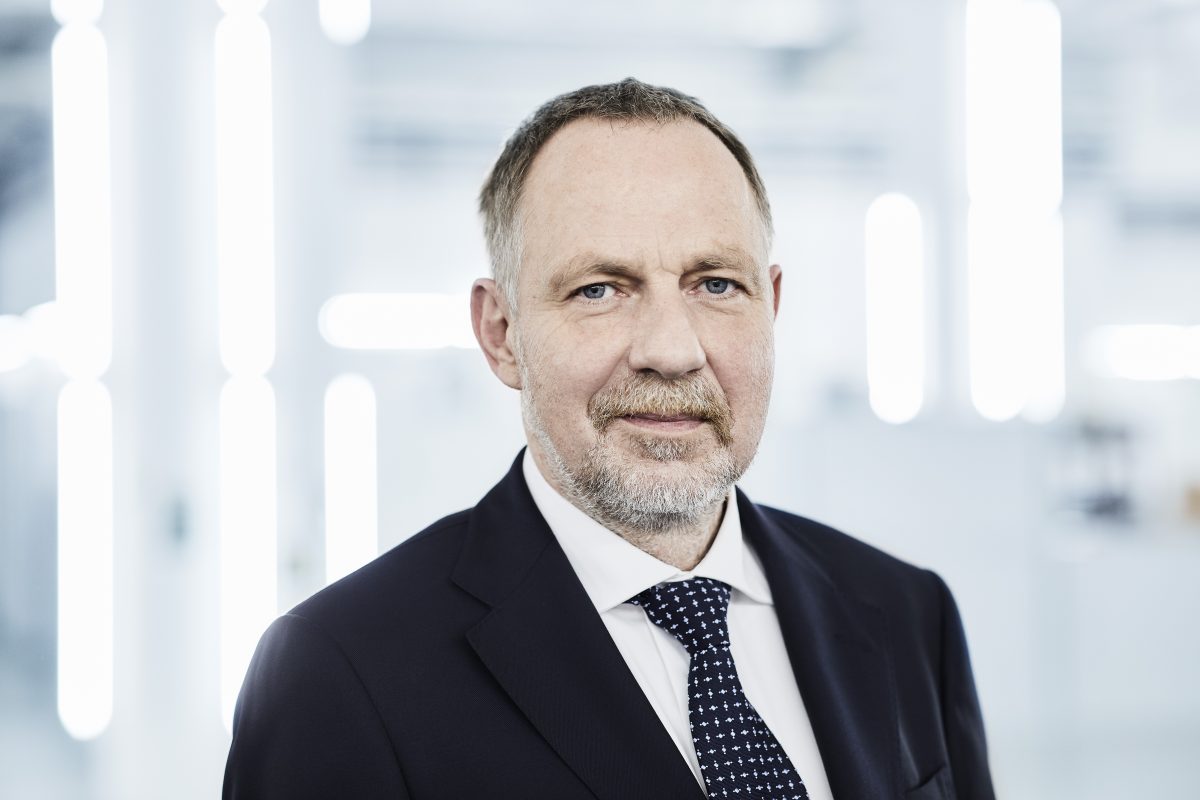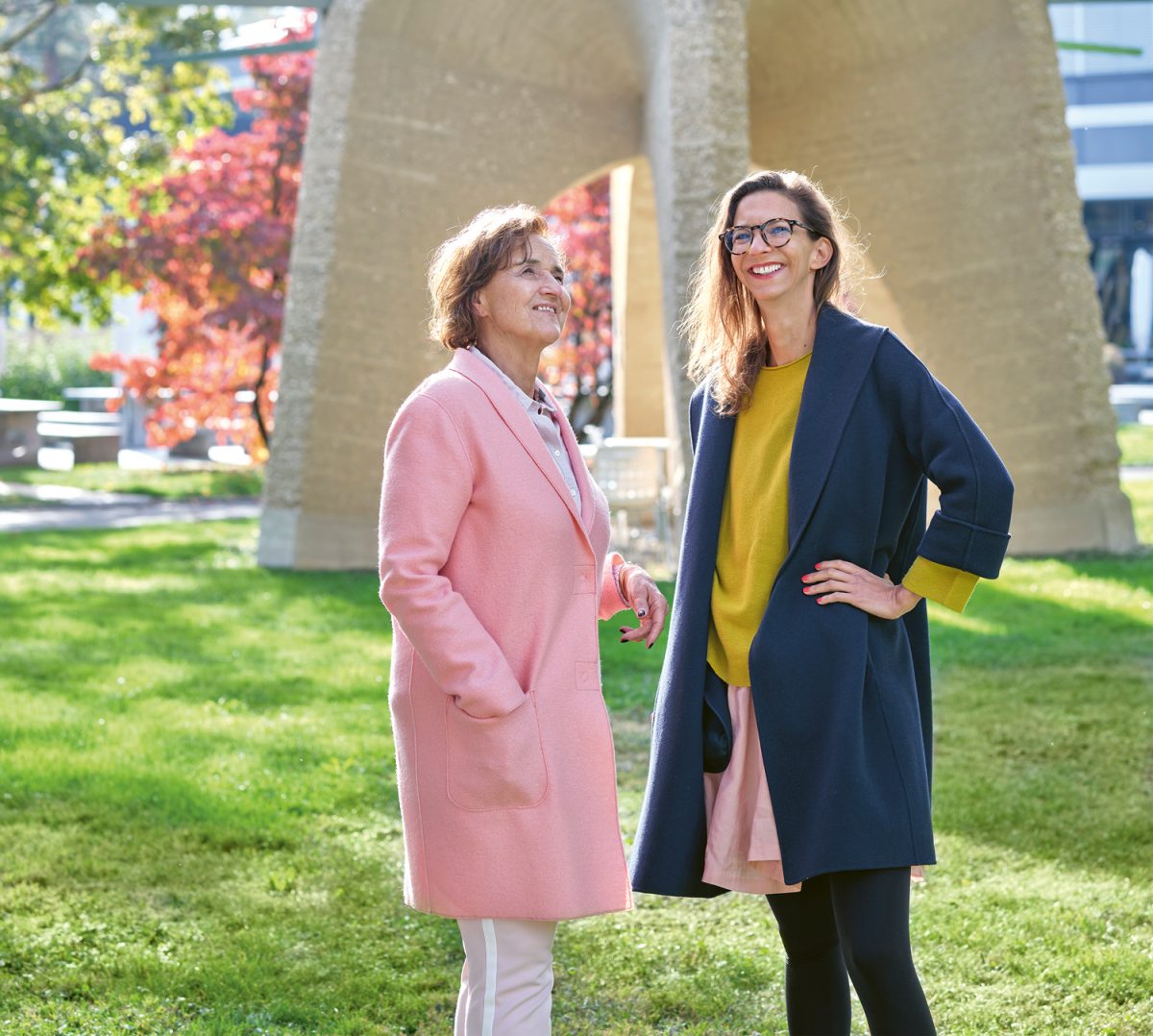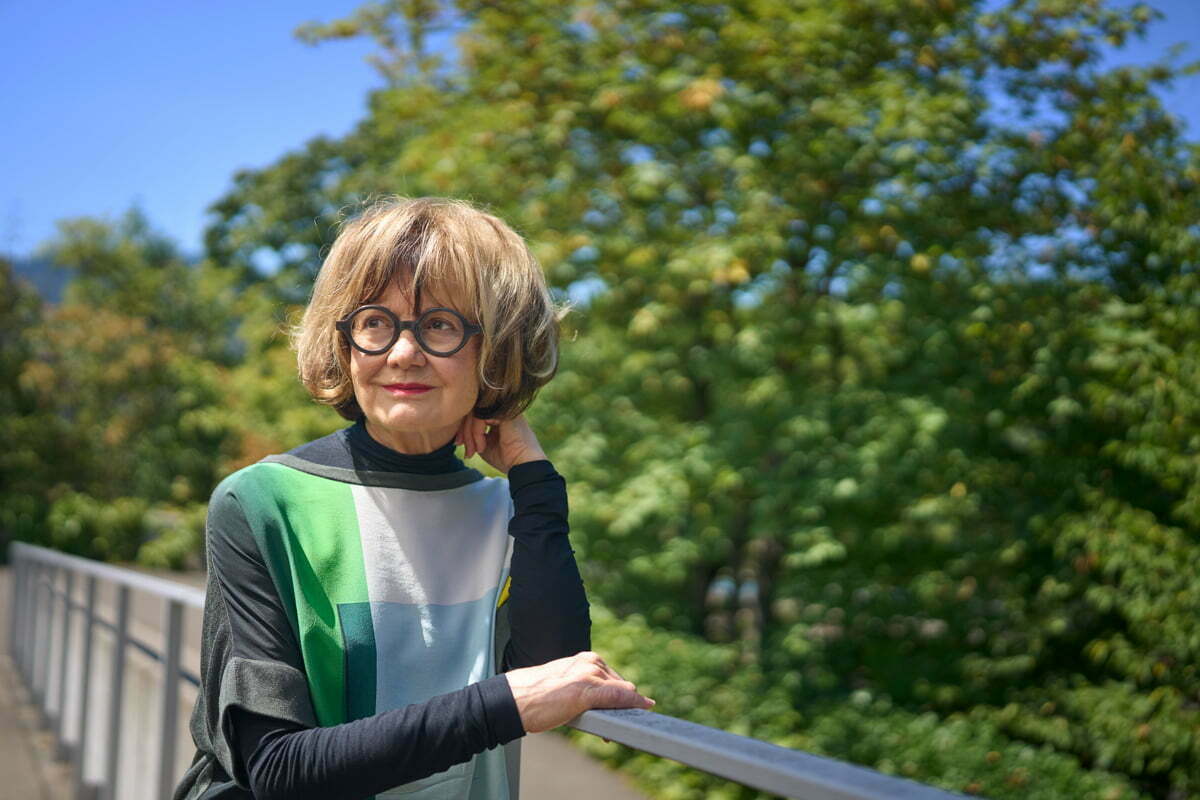Successfully moving around with the smart wheelchair
Whoever wants to meet one of the Scewo founders has to be at least as flexible as the wheelchair of this ETH spin-off. The reason is that the young team feverishly prepares the commercial launch of its product.
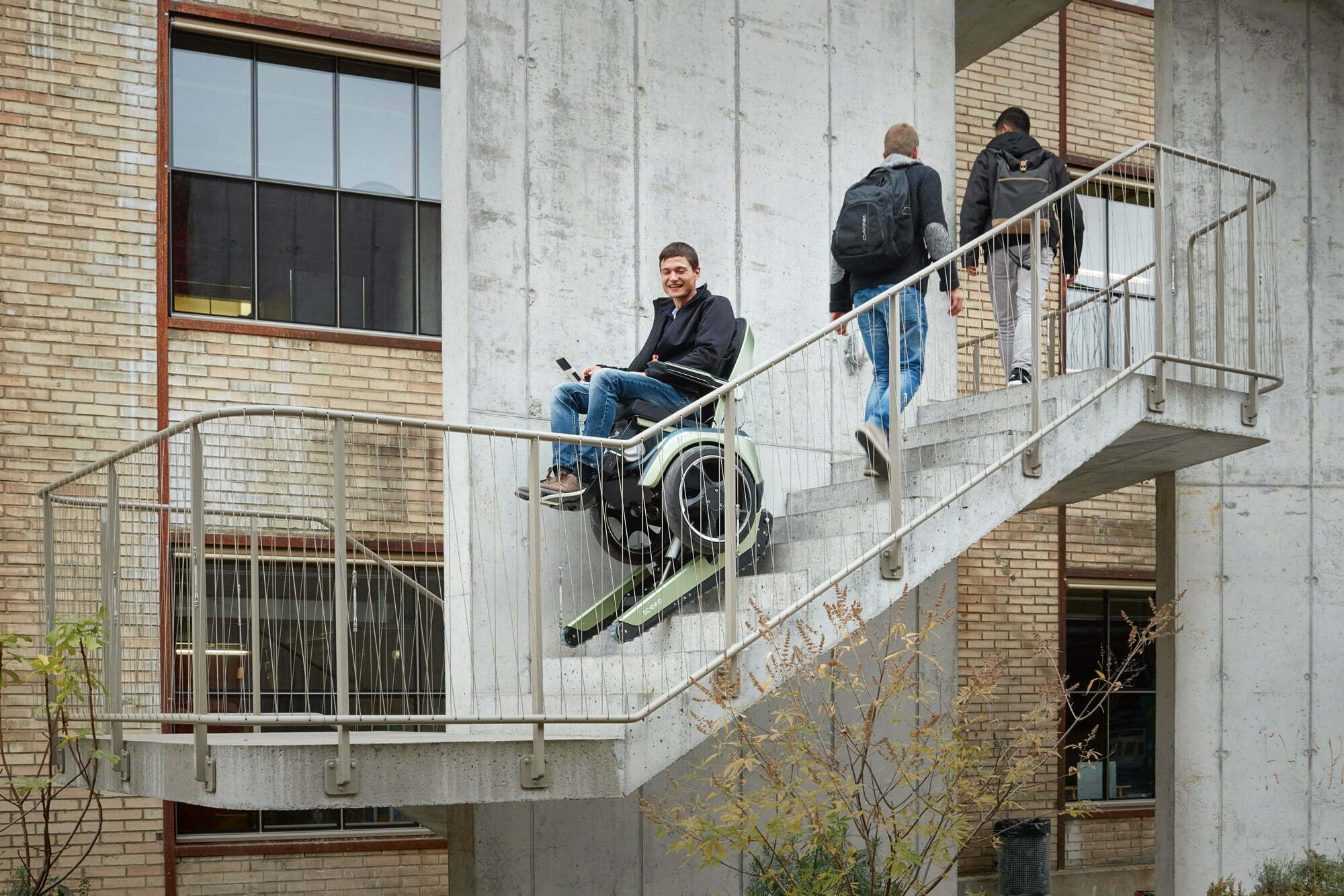
“Things are getting really tight; we spend all of this week at a trade fair. On Friday we offer test rides at the National Museum. Next week we spend three days in Hannover at the TÜV, the German Technical Supervisory Association. After that, we will be back in Winterthur, but both of our best prototype wheelchairs will be broken to pieces.” With a bit of persistence we still succeeded in meeting the young entrepreneur Pascal Buholzer. The Scewo story started in 2014 as a common project of ETH Zurich and the Zurich University of the Arts. Later on, the mechanical engineering students Pascal Buholzer and Bernhard Winter as well as the industrial designer Thomas Gemperle took over the project. They hatched out the idea of a particularly flexible wheelchair with only two wheels instead of the usual four. In the “caterpillar mode” it even climbs stairs. The very first prototype already made a sensation. The second prototype was used at the Cyberathlon, an ETH sports competition for handicapped persons equipped with auxiliary technical systems. After getting their degree at ETH, the three clever kids founded the startup Scewo that now has a staff of nine.
Turbo ignition on the way to the marketplace
The “Scewo Bro” as the wheelchair is called, is truly revolutionary. This becomes clear if one accompanies Pascal Buholzer on a demonstration ride. Quite often, people on the road ask if they may take a picture. Or then they shoot a video as the wheelchair climbs stairs. Buholzer remembers: “In 2015 we posted our very first video on YouTube; within a very short time, we reached a million views.” This was one more reason to convince him that there was an enormous need for a novel electrical wheelchair. On their way to becoming entrepreneurs, an ETH Pioneer Fellowship was a tremendous help for the team. Of course the financial part of it (150 000 Swiss francs) was direly needed. “Also, the network we became part of and the coaching by experienced people we could really trust were extremely important for us. Furthermore, the Pioneer Fellowship acts as a seal of approval for investors” says Pascal Buholzer.
Getting a quick feedback
What are the next milestones for Scewo? The preliminary tests at the TÜV are certainly very important, says Buholzer. The so-called drop test is particularly brutal: it consists in dropping the wheelchair 4400 times from a height of 5 centimeters. “We know that our wheelchairs will fall to pieces in the course of the test. What interests us is to learn where they fall to pieces”. Test rides with potential customers are also very important. “We will try to get as many preliminary orders as possible by the end of the year”. A total of 50 wheelchairs is the limit for the young company: “We want to be able of individually caring for our customers. For them, it is extremely important that the wheelchair works“. This is the reason why Scewo Bro will not be available abroad in this first phase, even though dozens of requests came in.
Almost an emergency
By the end of the year, Buholzer and his team plan to deliver the first wheelchairs – made in Switzerland. The first customers will be chosen among electrical wheelchair patients who are physically and mentally capable of handling the joystick. According to Buholzer the everyday obstacle that will make them opt for Scewo is not long suites of stairs as these are almost invariably bypassed by an elevator. The real problems are curbstones and unexpected height differences between station platforms and railroad car entrances. These are not a problem for the Bro that can handle 25 centimeters.
Buholzer’s team is moving rapidly. But for those who impatiently wait for their wheelchair, this is not fast enough. A user comment found on Facebook says it all: “These need to be made available everywhere”. In order to fulfill this wish as soon as possible, Scewo is looking for new investors.
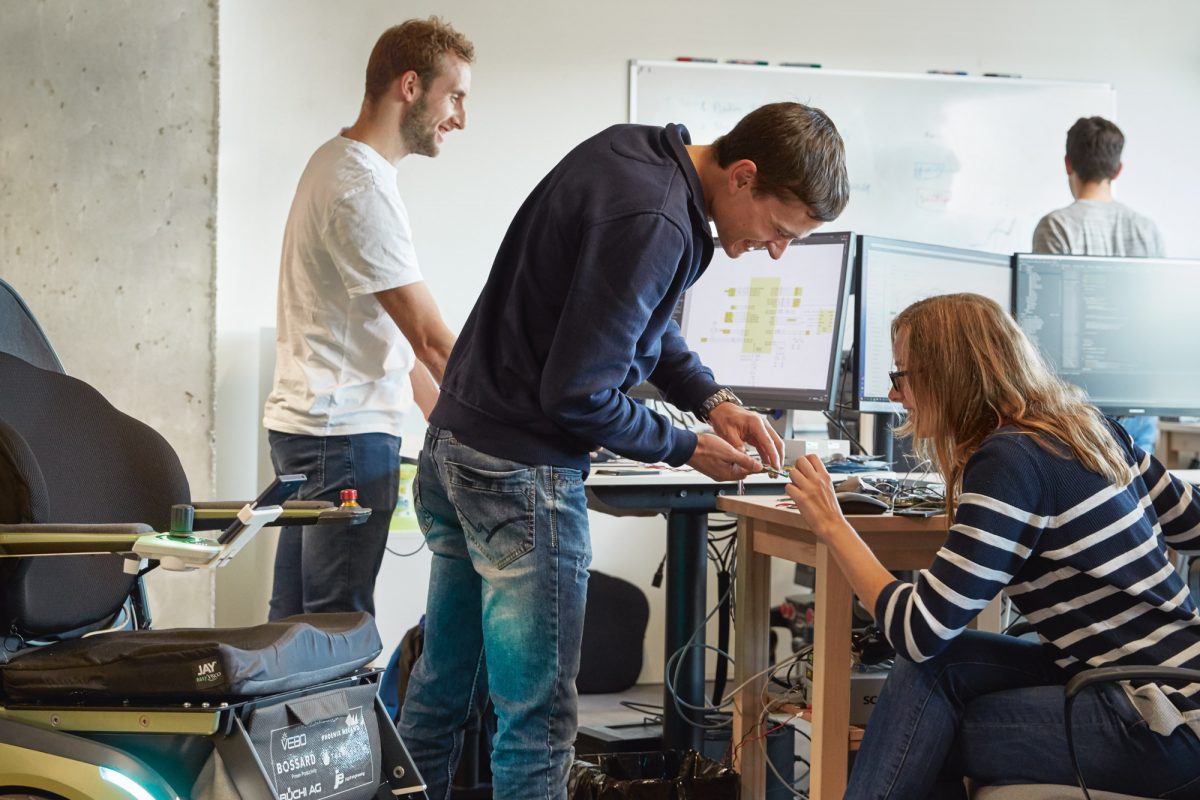
© ETH Foundation / Das Bild
